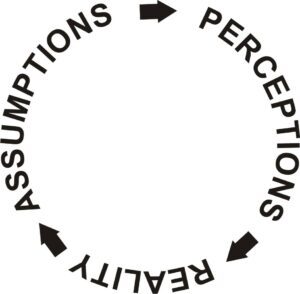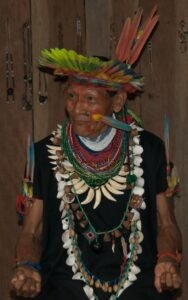In the Departure phase, the hero
leaves the familiar on a journey of self-awareness that will ultimately make or
break him. The Departure phase is about a way of doing things differently than
they have been done in the past. It is an awakening to the world of wider
possibilities. For a spiritual seeker, it means challenging accepted notions of
what spirituality means. It means going against the dogma and finding your own
individual path. It means trusting yourself and your own supernatural aid
enough to take that step.
Session 1 The Call to Adventure
So the People went in search of Coyote to ask him to go on the quest to find a new place for the People. Chief Buffalo sent Brother Eagle and Sister Cougar to find him.
They came upon Coyote playing in a field of fallen leaves, and told him that Chief Buffalo had summoned him, so Coyote followed them back to Chief Buffalo’s lodge. When Coyote approached, Chief Buffalo greeted him politely.
Brother Coyote said in return, “Why have you summoned me here on this fine but chilly day, Grandfather Buffalo?”

Chief Buffalo spoke, “I have asked you here to request that you go on a quest for the People.”
“A quest?” Brother Coyote asked skeptically.
“Yes, a quest,” said Chief Buffalo, “The days and nights are getting colder, and nobody can say whether they will ever grow warmer again. The People are afraid that the warmth of the Sun might never return, so we are asking you to go on a journey to find a new place for the Tribe to live.”
Coyote was
puzzled. His brothers and sisters of the tribe always seemed wary of him
because of his love of tricks and practical jokes. Why were they coming to him
now? This strange request didn’t seem to make any sense to him. How could his
brothers and sisters of the tribe, who didn’t seem to trust him, suddenly ask
him to take on such an important burden?
1.0 On the Nature of Reality
I moved to Pensacola, Florida shortly after graduating high school in 1978. I had begun investigating alternatives to the religious dogma of my Southern Baptist upbringing a few years before that time, and I was still trying to figure it all out. One day I was at the beach, wading in the water while meditating and taking in all the scenery, when I had a revelation.
If you’ve ever been to the Gulf Coast, you know that for the most part the water is crystal-clear. Or at least it was back in those days. I had waded out on this particular day to about waist-deep and was staring at my feet through the water. As I looked at my feet, I watched the image refract, expanding and contracting with the motions of the waves. I remembered from my high school physics class that matter is essentially vibrations of energy patterns. As I watched the patterns the water made across the images of my body, refracting them and bending the images at random, I began to see myself as vibrating waves and not as solid matter.
The ripples of the ocean waves made my body appear as if it were dissolving and re-appearing in clouds of probability around the center of my being. As I watched these ever-shifting images I had a revelation. The ripples represented the atoms and molecules that make up my body. They vibrated in and out of existence, just like subatomic particles do. Yet my body was still there. I looked out across the sea, watching the ripples recede into the distance. All of those ripples were separate and distinct, yet all were interconnected by the waters of the sea.
As I watched, I realized that this was a perfect metaphor for existence.
Each group of ripples could be seen as an individual entity. The subatomic vibrations that make up a human body or an animal, or other living thing, are all groups of vibrations resonating at a shared range of frequencies. The ripples could represent any inanimate object as well. By focusing on a particular group of ripples I could see that group as separate from the whole, but eventually they melted into other ripples, which melted into other ripples, and so on into the infinite horizon.
All of these ripples were separate in a way, but they were all interconnected to one another in another way. As I stared out across the surface of the sea, I saw it as a metaphor for the Universe and all the energy it contains in all of its myriad shapes and permutations.
At the time I had been reading materials on the ideas of clairvoyance and premonition. It seemed to me at the time that if people could really see the future, then this gift should work all the time, and not just intermittently, as was so often reported. My scientifically-minded viewpoint was that if there was such a thing as clairvoyance, it should work 100% or not at all. But as I stood there in the waters, watching the waves come and go, I began to see things differently.
As I stood in the sea, I saw one wave rise, only to be obscured by another wave. I could see the peak of one wave for a moment, but as another wave rose up, that wave was hidden from sight. Suddenly I saw the ocean as a metaphor for the fabric of time. What if time isn’t linear, but vibrates like waves on the surface of the ocean?
I pictured the waves as the sea of time in which we live our lives. What if those with the gift of clairvoyance can see the future, but only when the waves of time are in proper alignment? That would explain why clairvoyants aren’t able to be 100% accurate 100% of the time. From this perspective time is not a solid thing, but a pattern of waves, like an ocean. If an event occurs, it is like throwing a stone into the sea. That event produces ripples that change the pattern of time. If a large enough event occurs, like a war or a cultural revolution or change in consciousness, it is like a storm at sea. That storm makes a huge change in the patterns of the waves. As the waves spread out from the events that cause them, it changes the pattern a person with psychic abilities might see. So a vision of the future might vary from moment to moment as circumstances change.

What is the dividing line between one entity (or one reality) and another? How do we decide when one collection of vibrations is separate and distinct from another? For me, the answer is that there is no true separation. The idea of separation is an illusion that we have consciously chosen to accept for our own purposes. So if I perceive any separation between you and me, or between me and other living things, or between you and the inanimate objects in your environment, then that separation doesn’t exist in reality. It’s just a temporarily useful framework our minds have created in order to more easily make sense of things until a better hypothesis comes along.
Einstein demonstrated that there is also no separation between space and time. Space and time are part of the same thing. Time is just another aspect of space. Because of this “wavy” nature of reality and time, what we mean by “reality” isn’t necessarily written in stone. So there can be multiple realities based on where you choose to place your perceptions and how your consciousness chooses to organize those perceptions.
The Way of the Coyote is the Way of the Shaman. One of the characteristics of a shaman is the ability to walk between the worlds. In most shamanic traditions, this means that the shaman has the ability to go into the Otherworld where the spirits of the dead lie. Some people like to think of this Otherworld as having an actual independent existence outside of our own minds. For these people, the Otherworld is an actual place where the spirits of our departed Ancestors dwell. Others prefer not to declare that the Otherworld is a real place, but instead is the realm of what Carl Jung called the collective unconscious. In this place of collective unconscious, the Otherworld lies in our own unconscious minds, and does not have any independent existence outside of our own thoughts and perceptions. In this case, the Otherworld, or the collective unconscious, is the repository of all our unconscious archetypes. It is the genetic memory shared by all human beings.
In either case, whether you believe in the Otherworld as an actual place or as a construct of the unconscious mind, what matters are our perceptions of the Otherworld. If the Otherworld alters our perceptions, gives us useful information, and teaches us about ourselves and others, does it really matter whether it is a “real” place? What do we mean by “real” anyway? From this point of view, the Otherworld of the shaman is simply a non-ordinary reality created by altering our perceptions and consciously re-ordering those perceptions.
I imagine that a great deal of time and effort has been wasted on arguing about the “reality” of the Otherworld. I for one don’t care if the Otherworld is “real” or not. I’m far more interested in whether or not the Otherworld is a useful concept when it comes to re-ordering perceptions and changing consciousness. If the concept of the Otherworld is helpful to me in any way as I answer the Call of the Coyote, then it has fulfilled its purpose.
1.1 Creating Your Reality
Our assumptions about life influence our perceptions. Taken as a whole, all our perceptions add up to our own version of reality. If your assumption is that the world is flat, how would that influence your daily perceptions and your daily reality? What if your assumption is that the world is round? Each of these choices comes with perceptions about the way the world works. If you assume the world is flat, how would you feel about sailing in a ship to the ends of the earth? If you assume that the world is round, would you feel the same way? What reality would you create for yourself in each of the scenarios above?
You create your reality through your assumptions and perceptions. This creates a triad that looks like the illustration in the figure below.

To explain how this process works, consider for a moment that you have an assumption that “Everybody is out to get me.”
If your assumption is, “Everybody is out to get me,” then that assumption is going to set your perception filter in a certain way. With this assumption, your perception filter is set so that you only notice instances of behavior that confirm your assumption. If your perception filter has been set by the assumption that “Everybody is out to get me,” then you’re only going to notice when people act in a way that confirms your assumption, and you will ignore any behavior to the contrary. If this is how your perception filter is set, then you are going to ignore it when people act in such a way that they demonstrate that they are not out to get you. Not only that, but when people act in such a way, you’re going to take it as evidence that they are out to get you, because you’ll think that the only reason they’re being nice is that they’re trying to get something from you.
Now this assumption and this perception will work together to create your reality for you. Here’s how it works: If you assume that “Everybody is out to get me,” and your perception filter is set to only see examples that confirm your assumption, how are you likely to treat people who aren’t out to get you? If I’m a person who’s not out to get you, and I’m doing nice things for you because I like you and want to be your friend, yet every time I do something nice for you, you treat me as if I’m up to something, how long do you think I’ll stay around?
If you treat everyone as if they’re out to get you, even when they’re not, you will eventually drive away anyone who’s not out to get you. At that point, the only people who are still in your life are people who are out to get you. So through choosing your assumptions and your perceptions about the way the world works, and by acting upon those assumptions and perceptions, you create a reality based on those assumptions and perceptions.
Let’s look at another example. If you are seeking to follow the Way of the Coyote, you are seeking to walk the path of the shaman. To walk in the path of a shaman is to interact on a regular basis with the Otherworld. Therefore in order to be a shaman, you have to have some concept of the Otherworld. It can be a real place, or it can be a psychological place, but it is a necessary place for shamanism to exist and work its magic. So if you seek to walk the path of the shaman, but your first assumption is, “The Otherworld does not exist,” then you are going to set your perception filter to only notice things that confirm your assumption that the Otherworld does not exist. As you continue to ignore any and all evidence for the existence of the Otherworld, it will retreat further and further away from you, until, for you, it does not exist.
On the other hand, if you assume the Otherworld does exist, then your perception filter is set to look for evidence that confirms this assumption. The more evidence you find to support this assumption, the more you make the Otherworld real in your own mind.
When considering the Otherworld, don’t forget that just because something is happening in your own mind, that doesn’t mean it’s not real. The Otherworld might be a real place, or it might just be a place of psychological processes lying between the conscious and subconscious worlds. In either case, if you experience the Otherworld, then it has become real for you. I prefer to focus on the utility of these experiences instead of whether or not they’re happening in a “real” place. The more I use my assumptions and perceptions to create my own reality, the more real the Otherworld becomes for me.
1.2 Characteristics of Shamanism
Shamanism is known throughout most indigenous cultures of the world. The word shaman itself comes from the Evenk language (Tungusic) of North Asia, and originally meant, “one who knows,” so a shaman is a wise person. The word itself is North Asian in origin, but most primal cultures had some sort of concept of the shaman, even though they might not have been known by that name. In ancient Scotland they were called “taibhsear, or “vision seekers.” In Lakota, they were called “Wicasa Wakan,” or “holy men.” In Hawaii, the word is “Kupuna,” meaning “Elder” or “Ancestor.” There are nuances of meaning from culture to culture, and some cultures get offended when people use an Evenk word to describe their own shamanic traditions, but the word “shaman” has become ingrained in common usage to refer to anyone from any culture who practices a spiritual path with the characteristics listed below:

- Out-of-Body experiences – These experiences are sometimes called “soul journeys” or “magic flights.” In such an experience, the practitioner’s soul leaves the body and travels to distant places and/or times to gather information for healing and other purposes. Most cultures that practice shamanism also have a belief that the shaman can visit the Otherworld; the realm of the dead that is the dwelling place of the departed Ancestors, and sometime of the gods as well.
- Chanting, drumming and dancing – These rhythmic and repetitive sounds are specifically designed not for entertainment, but to induce a trancelike state that can then be used to journey to the Otherworld.
- A codified system of training – This training system usually takes the form of an apprenticeship in which an experienced shaman trains a student in specific tools and techniques usually geared towards producing visions and otherworldly journeys.
- An initiatory crisis involving a death and rebirth experience – This is usually a ritualized event in which the student or apprentice “dies” to the old way of life and is reborn to a new way of being in the world. It usually also includes a new way of seeing the world.
- Gifts of divination, diagnosis, and/or prophecy – Shamans are able to see the future, diagnose sicknesses, and make prophecies. Divination and prophecy usually takes the shape of journeying to the Otherworld and bringing back information, or consulting with the gods about the fate of a person or situation. The diagnostic aspect can incorporate basic medical skills, but also moves beyond the physical to seeking diagnostic information within the spiritual realm.
- Healing rites and rituals involving spiritual matters – Shamans from most cultures journey to the Otherworld to recover lost souls who may have left their bodies behind during a sickness. They may also recover spirits trapped in various versions of Limbo.
- A belief that diseases are caused wholly or in part by spirits, witches and sorcerers, or curses – A modern take on this belief is the idea of doing energy work in order to prevent the influence of negative energies and to promote the influence of positive energies. Studies like the Adverse Childhood Experiences (ACE) study have demonstrated that mental wellbeing can have a powerful impact on one’s physical wellbeing, and restoring mental and spiritual balance improves immune system functioning and overall physical health.
- A belief in and interaction with totem animals and spirits – Most shamans have at least one totem animal, and many have more than one. Totem animals assist the shaman in spirit journeys, and in completing magical tasks. They may also watch over the shaman and people under her protection.
- The ability to shape-shift into different animals – This shape-shifting doesn’t necessarily imply a literal transformation. It could be creative costuming and mimicry. Shamans from many cultures wear feathered cloaks because birds have the ability to shift between the worlds of earth and sky. By impersonating birds, shamans gain their powers and abilities. So by dancing like a bird, the shaman gains the power to travel between the worlds.
- Ability to cast and to cure curses – Shamans have the ability to see things others cannot. This means that they can recognize the influence of negative energies in the form of curses. They also have the ability to hurl curses at others using their own spirit allies. A modern interpretation of this could be seen as having the ability to remove the influence of toxic relationships in our lives.
- Ability to perform hunting magic – Shamans have the ability to predict the movements of food animals, to bring them closer to the tribe, and to perform rites and blessings of thanksgiving for a successful hunt. A modern interpretation of this skill could be the ability to attract positive influences in one’s life.
1.3 Modern Shamanism
Looking over the list of the characteristics of the shaman outlined above, a modern spiritual seeker can readily identify with some of those characteristics, while others might be more difficult to put into a modern context. It’s easy to engage in ritual chanting, drumming and dancing around a campfire, and to have a ritual death and rebirth experience (in a metaphorical sense, that is). It may be more difficult to cast literal curses or to engage in actual hunting magic in a contemporary urban or suburban environment.
So what does it mean to be a shaman in modern times? How do we walk the Way of the Coyote in an industrialized society? A redefining of the role of the shaman is necessary. The way to begin this redefinition is to first answer the Call to Adventure.
In the Departure phase of our journey to ecospirituality, we are leaving the familiar world to partake in a journey of self-awareness. We are learning a new way of being in the world, and challenging our old assumptions and perceptions about the way the world works in order to create a new reality. We are allowing ourselves to awaken to a world of wider possibilities by being willing to do things in a different way. We are recognizing the interconnectedness of all things, and that we are all one. It may mean challenging the old dogmas by which we have lived our lives in the past. It may mean allowing Coyote to devour our sacred cows so that we can come to trust our own inner voices. It may mean learning to trust ourselves and our own supernatural aid enough to be willing to take that first step into a new reality.
The choices you make create that reality for you. What reality are you choosing to create?
The Call to Adventure is the catalyst that sets the Hero’s Journey in motion. It could be an inner need to change one’s circumstances, or it could be an external event that triggers the journey. In either case, the hero recognizes that something fundamental has changed, and he/she can never go back to the way things were.
If you are holding this book in your hands right now, you have received such a Call to Adventure. It is up to you how you choose to answer that call.

1.4 The Call
Looking over the list of the characteristics of the shaman outlined above, a modern spiritual seeker can readily identify with some of those characteristics, while others might be more difficult to put into a modern context. It’s easy to engage in ritual chanting, drumming and dancing around a campfire, and to have a ritual death and rebirth experience. It may be more difficult to repel curses or to engage in hunting magic in a contemporary urban environment.
So what does it mean to be a shaman in modern times? How do we walk the Way of the Coyote in an industrialized society? A redefining of the role of the shaman is necessary. The way to begin this redefinition is to have a change of context. The first step in creating such a change in context is to answer the call.
Have you heard the Call to Adventure that is the Way of the Coyote? Here are a few characteristics to help you to recognize if Coyote is calling you:
- You have a deep concern for the environment and all life
- Family is extremely important to you
- You use humor as a teaching tool
- You like to challenge everyone’s beliefs, including your own
- You are a fierce protector and loyal friend
- You have an ability to “walk between the worlds”
- You had dreams and visions of other realities as a child
- You have an inner sense that you were born for a higher purpose
- You are willing to acknowledge your mistakes and learn from them
- You have a no-nonsense approach to things that matter
- You have a way of cutting through the extraneous to get to the heart of the matter beneath the façade
- You feel more at home in the woods than in a city
- You have often been attracted to nature, more so than your peers
- Traditional forms of spirituality and religion don’t seem to fit you
- You want to make a difference and leave a legacy
- You have a natural gift for teaching and explaining things to others
If these characteristics sound familiar, then you may be ready to answer the call. When you have read over the material in this section, download and complete the worksheet below.

